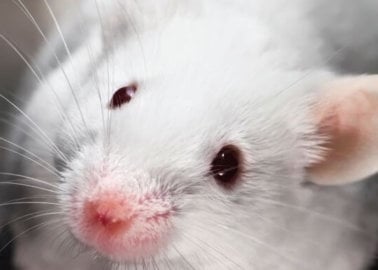The New EU Cosmetics Testing Ban – Your Questions Answered
You’ve probably heard the good news – as of 11 March 2013, cosmetics tested on animals can no longer be sold in Europe, even if the testing happened outside the EU. This is a landmark victory in the campaign against cruel experiments on animals. But what does it actually mean for consumers who want to make sure that the shampoo, make-up or moisturiser they’re buying wasn’t tested on animals and that their money isn’t going to companies that profit from cruelty?
Our science adviser, Dr Gilly Stoddart, answers some of your questions:
What does the ban mean for animals?
Testing cosmetics products and their ingredients on animals has been banned in Europe since 2009. However, a loophole meant that companies could still profit from testing cosmetics outside Europe and then selling them on European shelves. On 11 March, that will change, and cosmetics tested on animals anywhere in the world will no longer be sold in Europe. This will save thousands of animals around the world from frightening and painful tests in the name of vanity. If cosmetics companies want to reach the 500 million consumers in Europe, they will no longer be able to subject animals such as rabbits, rats and mice to tests such as force-feeding, dripping chemicals into rabbits’ eyes and rubbing substances onto animals’ abraided skin.
Can I now buy products from any company without supporting animal testing?
The sales ban means that all new cosmetics products sold in Europe will no longer be tested on animals, nor will they contain ingredients that were tested on animals, after the 11 March deadline. You, can, therefore, buy any product in Europe, safe in the knowledge that no new animal testing has been performed for that product and that no animals will suffer and die in a laboratory for it.
What kind of humane testing methods will now be used for cosmetics?
Thanks to the ban, companies have created and continue to pioneer modern, humane non-animal testing techniques, which are more effective, often cheaper and the best way to protect both animals and people. These include using human cells and tissues and high-speed computer models – cutting-edge techniques that weren’t available when cosmetics tests on animals started in the 1920s. PETA US has actually donated funds to help develop and validate such methods.
So have cosmetics companies stopped animal testing altogether? What about outside the European Union?
Here, the picture is a little more complex. Multinational companies may continue to conduct tests on animals outside Europe for sale in other markets such as China. However, with Europe sending such a powerful message that testing cosmetics on animals is on the way out, we’re hopeful that the situation will begin to improve around the world, especially given the development of cheaper and more effective humane testing methods. Israel, for example has already banned the testing of cosmetics on animals, PETA India is working hard to persuade its government to follow suit and thanks to guidance from PETA US-funded scientists, Chinese officials are now in the final stages of approving the country’s first non-animal testing method for cosmetics ingredients.
How can I guarantee that I’m not giving my money to a company that profits from cruelty in other countries?
Keep looking for the cruelty-free logo, the leaping bunny, a sign that a company has made a promise never, ever to test on animals.




